English Heritage.
This was a classic Norman motte and bailey castle, founded soon after the Conquest to overawe the Saxon town. A later stone shell-keep crowns its steep mound, and gives sweeping views across the town rooftops to the River Dart. The shell-keep wall is in a fair state of preservation, as can be seen in stock photos.
Apart from the view, there’s not a large amount of things to look at, but the circular shell keep itself looks rather iconic. You’d think that a castle on a high mound would be easy to spot, but if I remember correctly I had a lot of difficulty finding it, because the crowded old buildings block any view of it from street level. If you don’t have any luck with brown signs, find a good street map and track it down with that. The old centre of Totnes is not car-friendly so if you arrive by car it would be best to park it in a car park on the edge of the town centre and continue on foot. When I was last there, it was possible to drive up the length of the old high street and under the building that spans the street, but I really wouldn’t recommend it! Also, the exit from the top of the high street onto the ring road is hazardous, because of poor visibility and high-speed idiots.
Other EH castles are in the same area of South Devon.
Author: visit
Stonehenge, Wilts.
English Heritage.
One of the iconic English monuments. It is easily found at the A303/A344 junction and you could make it a stop en route to the south-west. There have been plans to expensively re-work the surroundings and visitor access, but when I visited in 2007, one had to park across the road from the stones in the EH car-park, and then cross under the road via a tunnel. One could walk around the stones in a circle but not walk amongst them. The site is open daily. (Admission charge) A free audio tour is available.
Druid myths apart, the site is impressive, the standing stones are colossal and the prehistoric workmanship amazing. A number of fallen and unstable stones were re-erected in the 20th century to restore the circle to more like its ancient complete form.
The ancient monument enthusiast will find other monuments in the same area.
Rushton Hall, Northants.
Rushton Hall is a most impressive place built around a square central courtyard. It dates from 1438, but much of the present structure seems to be Victorian. It’s now an up-market hotel, but they don’t mind visitors having a look at the public rooms (on the ground floor facing the water), and if you ask in the bar, they’ll probably give you a booklet about the history of the place. If you have a serious interest you could contact the general manager about your visit in advance. The public room interiors and ceilings are quite impressive, as is the courtyard. The bar, housed in what was the great hall, with stained glass windows, is the most impressive room. The house changed hands in 1853 for £165,000, at a time when the average dwelling cost several pounds, but it was sold in the 1950’s for £1.
The hotel reception is to the left of the main entrance, and the public rooms and bar are further on in the same direction. The drinks, predictably, are expensive 🙂
It seems there are some public access days: Hotel website.
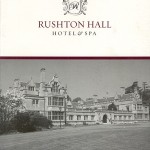
Rushton Triangular Lodge, Northants.
English Heritage.
This strange triangular building was designed by Sir Thomas Tresham, and constructed between 1593 and 1597. The number three is apparent everywhere in the design, with three floors, trefoil windows, and three triangular gables on each side. It is open several days a week in the warmer months.
I navigated to the location using sat-nav. It’a a curious building and worth a visit if you are in North Northants. The Lodge was formerly part of the Rushton Hall estate, the Hall being about a mile away. The Hall, now a hotel, is worth seeing.
RNAS Culdrose, Cornwall
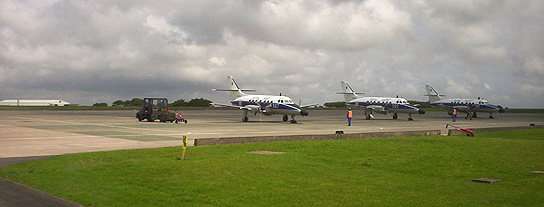
It’s wise to arrive in good time for the tour so that you can get signed up in time for departure. The high point of the tour I went on was going inside a huge hangar where helicopters were being maintained. It was all really interesting.


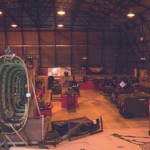

Overbeck’s, Devon
National Trust.
This is a museum of curiousities, set in an exotic semi-tropical garden. The last owner of the house, scientist and inventor Otto Overbeck, filled the house with his collections. There is a cabinet devoted to his inventions, which include an electrical “Rejuvenator”, designed to inject new life into the old and tired by passing electricity through the body. Also in the museum is a “Polyphon” a music box using large sheet steel disks, which plays music encoded as punched holes, also display photographs of various shipwrecks, and under the stairs a collection of dolls’ houses. The garden has some very steep slopes, and views over coastline and estuary.
This isn’t the easiest place to get to, as the roads leading to it are single-track, steep and twisty, and not suited for anything bigger than a minibus. There is a small car park near the house, for visitors, and if it’s full, finding alternative parking could be troublesome. If you are feeling really fit, it’s possible to park at East Soar and walk up (2 miles), or walk up from the ferry (1/2 mile). The NT handbook cautions drivers against paying too much attention to one’s sat-nav and advises following the brown signs from Marlborough towards Salcombe. As I recall, it was steep and narrow the direct way and steep and twisty by the brown sign route, neither an easy drive.
Minack Theatre, Porthcurno, Cornwall
This is an unusual theatre, being an open-air theatre on a cliff-side site overlooking the sea. I went to a play there in 2007, and found that I could hear and see perfectly well. Stone bench seating is provided as-is, and a ticket doesn’t allocate you to a seat as in a conventional theatre. You are advised to take something to sit on, and suitable clothing in case of light rain, and arrive early if you want a decent seating position. Ticket prices are quite low, compared with my local theatre.
As for the programme, they generally offer popular fare. If you are staying in the area, and the weather isn’t nasty, it would make an unusual night out. There is an on-site café. Note that the site can be visited during the day, on payment of an entrance charge (and if you want a look now, check the website’s web-cams!)
Kelmarsh Hall Gardens, Northants.
The gardens were originally laid out by society decorator Nancy Lancaster in the 1930’s, and now have a Grade II* gardens listing from English Heritage, and are also a RHS Partner garden. It includes herbaceous borders, a rose garden, a walled kitchen garden, and a traditional greenhouse. Worth a visit if you like gardens at all.
The gardens are open several days a week in the warmer months.
Kelmarsh Hall, Northants.
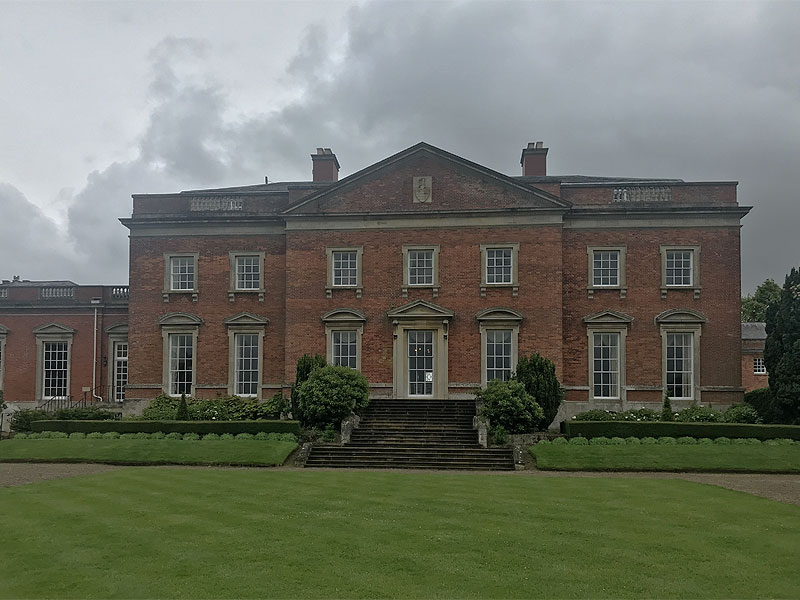 Private (HHA)
Private (HHA)
The house was built in the 1730’s by virtuoso architect James Gibbs, and is a very attractive red-brick building of symmetrical and reticent design. The present interior decoration owes much to society decorator Nancy Lancaster, who lived at the house. Ground floor and first floor rooms can be viewed. In the basement, various staff and service rooms, and the modern heating plant can be seen. The basement area was opened for visitors in 2022.
Outside, behind the house are extensive gardens, serpentine lake and grassland. Do not miss the triangular walled garden with its fine displays of flowers (in season) and its greenhouses. For the children, there are some fairies to be found in the Wilderness area.
The house and contents are well worth a visit, and the gardens are also a popular attraction. The house is open on Tuesdays and Wednesdays only, but the gardens are open additionally on Thursday and Sunday. It might be wise to arrive in good time if you want to see everything.
Disabled visitors should inquire about the lifts, noting that the entrance to the ground floor, at the side of the main block, involves a substantial flight of steps, and there is a long flight of steps up to the first floor. I noted a video show on the ground floor showing the treasures on the first floor.
Also note the somewhat confusing arrangements in the visitor reception centre, where the reception also takes the payments for guidebooks and other knick-knacks, and the tearoom is at one side of reception while the till and counter is on the other side.
Kelmarsh is no longer associated with the Croome furniture collection.
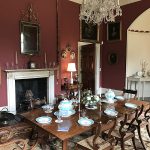
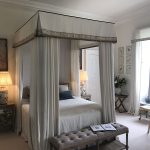
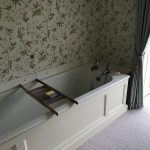
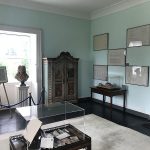
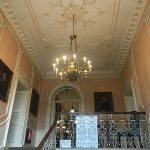
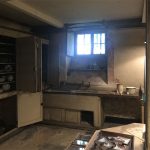
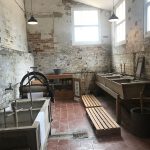
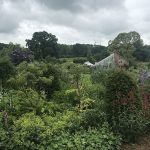
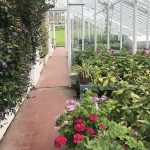
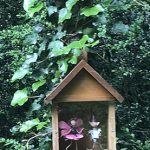
Hatfield House, Herts.
Hatfield is one of the great treasure houses of England, with many fine rooms filled with art objects. Outside, there are several gardens, a maze, and also the Hatfield Old Palace, which elsewhere might be an attraction in its own right. The surviving wing of the Old Palace today consists of a great hall, used for functions. Don’t miss the viewing platform in the gardens which gives visitors a clearer view of the South Front. Asides from all that, there is the wider park and estate.
There is enough here for a half to full-day visit.
